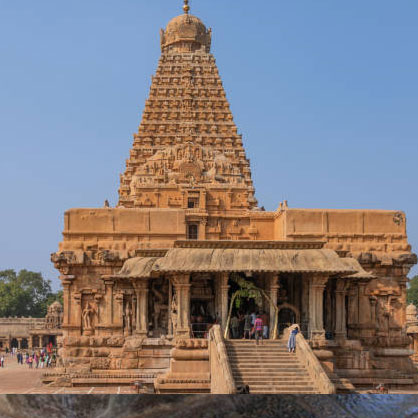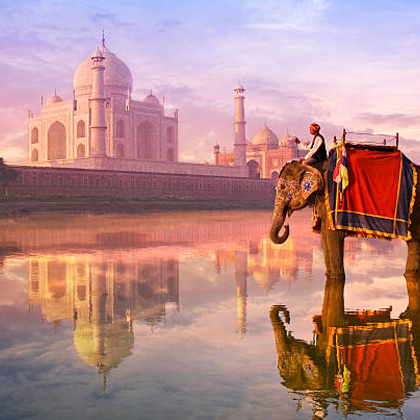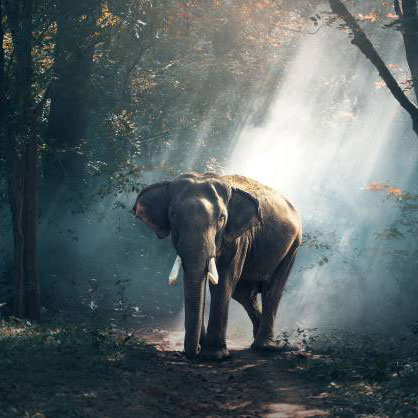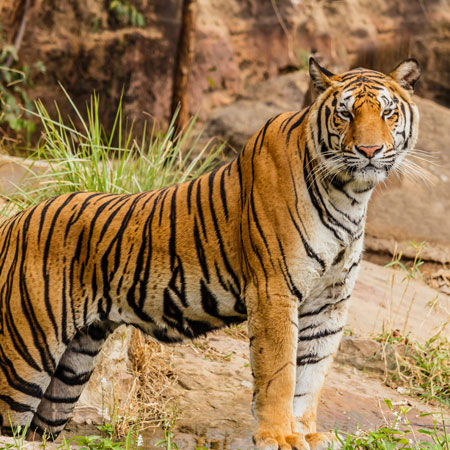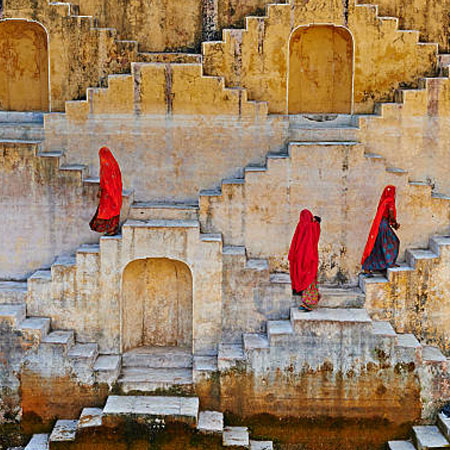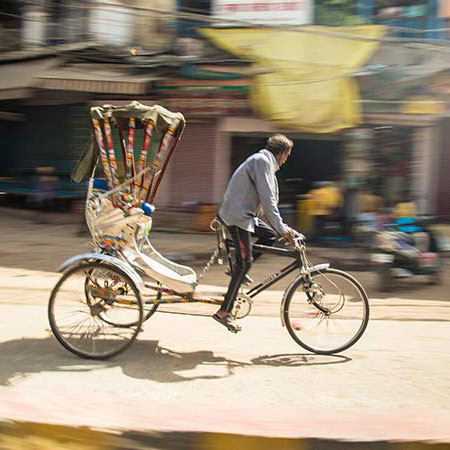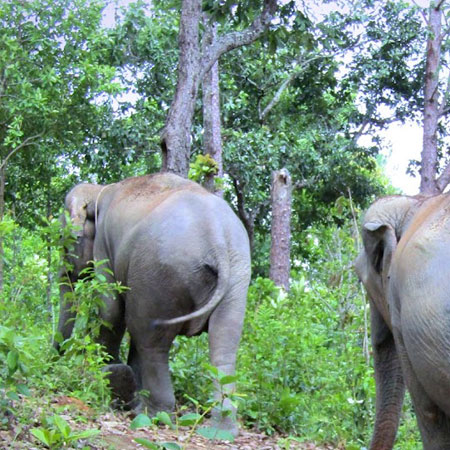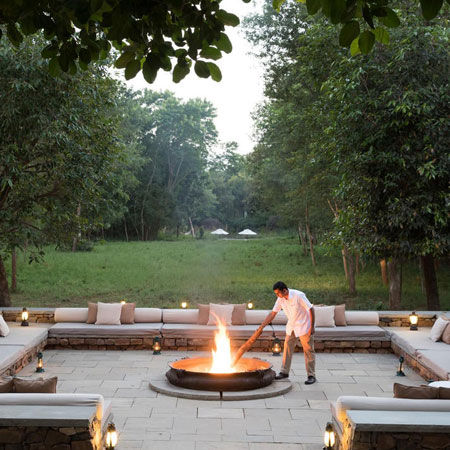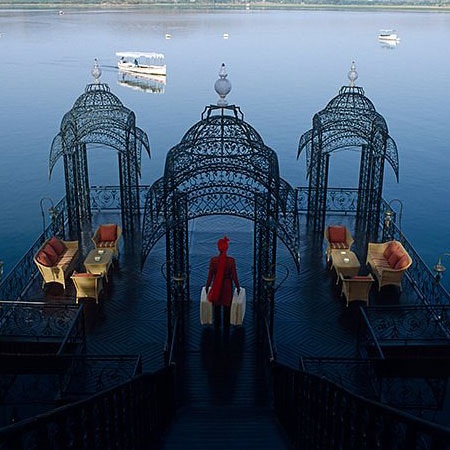Clip clop, clip clop..the hooves of the burdened pony clash wearily on the steep cobbled path. A young lusty river froths down the slopes and the animal sleek skin glistens with moisture. It is wet from the low hanging clouds and the animal involuntarily shudders the pesky flies away. A fine needle-thin drizzle makes the stony path slippery and the experienced pony trudges upward at a cautious pace. All around deep green fir and pine trees drip water and ferns grow in lush clusters. Mountain flowers in beautiful jewel colors bloom in masses, and a huge wild beehive hangs from the rocky eaves. The massive Himalayas stand close enough to be touched and somewhere in the distance a glacier crackles under pressure. A wide blue sky spans overhead and every breath fills the lungs with sweet, fresh, clean air. We are somewhere in the folds of the Himalayan range, tucked away in a remote corner of Uttarakhand. This is a far cry from the busy dusty megacities and you can enjoy to the most with suitable luxury India tours
Explore the best national parks with luxury India tours
It is a pity that for most travelers, India is synonymous with the much popular Golden Triangle, Kerala, or Manali. There is so much to this subcontinent that one can spend years and yet discover only a fraction of it. A nature lovers paradise, some of the best experiences here are at the national parks and there is a mindboggling variety of flora and fauna to choose from. Decide whether you like lions or snow leopards, elusive red pandas or rare mountain flowers, and let tailormade India luxury tours work their magic. As mentioned before, India’s awesomeness lies in its sheer size and diversity and you can visit it any time of the year. Just decide on the time of your visit, look up which places are best in that season, and explore the beauty of nature at its best. In this article, let’s explore some of India’s most beautiful offbeat national parks.
Spot snow leopards at Hemis National Park in January
Winter in India can range from frozen days to tropical balminess with lovely cool weather somewhere in between. Come winter and nature and wildlife photographers rush to the Hemis National Park in Ladakh in northern India. Their aim is to capture the elusive gray ghost on camera. It is the best time to spot the national park’s elusive star, the snow leopard. The sparse landscape is at its starkest and there is an undeniable sense of old-fashioned adventure. It has everything. The wait, the anticipation, swapping of travel stories, human battle against difficult natural conditions and most of all, a rare sighting of the gray ghost. Despite Hemis National Park having the densest population of snow leopards, the sightings are rare. Explore this alpine tundra region with luxury India tours and experience a truly magical winter.
Bedazzled by migratory birds at Keoladeo National Park in February
What started as a favorite duck hunting winter spot for the erstwhile maharajas evolved into a fully-fledged Keoladeo National Park in 1982. Extensive protection and preservation steps have made this gem of a national park into a migratory birds hotspot and February is the best time to see these winged beauties. Part wetland and part savanna, this compact park is an ornithologists dream and hosts migratory waterfowl from China, Afghanistan, Turkmenistan, and Siberia. One can spot painted storks, sarus cranes, spoonbills, and black-headed ibises along with some deer, tortoises, and monitor lizards. It is wedged between the historic cities of Agra and Jaipur and the best luxury India tours make half-day stops at this national park.
Meet the one-horned rhinos at Kaziranga National Park in March
Come March and let the spring sun whisk you away to the northeastern state of Assam. The mighty Brahmaputra river spans there and its huge floodplains host one of the rarest wild animals in the world: the one-horned rhinoceros. Highly poached for their prized horns which are used in traditional Chinese medicines, these amazing beasts were snatched back from the brink of extinction. In fact, Kaziranga National Park was created exclusively for this purpose and today, nearly two-thirds of the world one-horned rhino population resides there. For the best chances of spotting, go on an early morning safari and you might even see tigers, wild buffalos, and tuskers amidst the swaying grasslands. The luckiest ones can see river dolphins frolicking in the Brahmaputra river. To have a truly memorable experience, combine Kaziranga with any luxury India tours of the northeastern states.
The April heat and the Asiatic Lions at Gir Forest National Park
Did you know that India is home to the last wild Asiatic lions in the world? They are tucked away in the Gir National Park in the western Indian state of Gujarat and are their revival is a rare conservation success story. The rapidly dwindling number of Asiatic lion shot up from 50 in the 20th century to 411 presently and it is something we can all be proud of. This subspecies of lions once roamed over a large area, from Greece through Iran to India and were used by the Romans in gladiator fights at the Coliseum in Rome. Today, they call a 550 square miles of teak forests home and co-exist with Sambar deer, nilgai, wild boar, tigers, and leopards. Visit Gujarat on luxury India tours and get glimpses of this majestic animal at Gir National Park. Though blazing hot, April is considered to be most suitable for photographing lions here.
May calls for some tuskers and R&R at Nagarhole National Park
May is officially the dry season in India. The heat is intense and water sources start drying up. Don’t let the adversities keep you from visiting. Just plan smartly with one of the luxury India tours, soak up some mountain freshness at Coorg, Munnar or Kodaikanal and spend a few lazy days at Nagarhole National Park in the southern state of Karnataka. This is one of India’s best-kept wildlife secrets. The dry spell and lack of water draw all the animals to the banks of the river Kabini making it one of India’s most unique wildlife congregation spots. On any given day, you will see elephants strolling by, tiger creeping up to lap up some water and herds of deer grazing serenely. You don’t have to do any hard work to get those amazing wildlife shots. Only just keep your camera handy.
Head for the hills in June and visit the Dachigram National Park
June is oppressively hot in India and there is an old saying that only the mad dogs and Englishmen visit the subcontinent at that time. The good old Englishmen owing to their hundreds of years of experience of living in India always headed for the hills during this season. If we follow their advice, then in June simply head for the lush hills of the northern Union Territory of Kashmir and go spotting for hanguls at the Dachigram National Park. Hangul or the Kashmiri stag is the subspecies of the elk in India. It is found abundantly at the Dachigram along with many beautiful birds, fruit trees, and flowering shrubs. Great weather, mountain air, and awesome Kashmiri wazwan cuisine come hand in hand with luxury India tours to Dachigram in Kashmir.
Discover the magical Valley of Flowers in July
There are few places in India as magical as the Valley of Flowers in July. Hidden away in the northern Indian state of Uttarakhand, the Valley of Flowers National Park showcases its prettiest flowers from June to October. July is the peak flowering time when the entire valley gets carpeted with over 500 species of blossoms. This natural spectacle takes place in the West Himalayas and this national park is now on UNESCO’s World Heritage List. Due to the remote location, Valley of Flowers National Park is best visited with luxury India tours which can also pre-arrange helicopter transfers.
Experience the stunning beauty of Kaas Plateau in August
Imagine the romance of the Indian monsoon, glistening wet greenery which looks inviting and the Western Ghats brimming with flora and fauna life. In the midst of all this beauty, lies a place which is prettier and that is the Kaas Plateau. Located 25 kilometers west of Satara in the western state of Maharashtra, the Plateau of a Million Flowers or Kaas Plateau is a UNESCO World Heritage Site. Every monsoon, this plateau bursts forth with thousands of colorful flowers, most of which bloom only for a short period. To preserve the place, only 3,000 visitors are allowed every day and one needs to book in advance. To avoid all hassles, simply request for a visit to the Kaas Plateau on any of the luxury India tours and experience the best of the subcontinent in a relaxing manner.
September is for musk deers in Askot Musk Deer Sanctuary
With the stunning backdrop of the Kumaon Himalayas, the hamlet of Askot is a hidden gem. Located close to Nepal border in the Indian state of Uttarakhand, Askot Musk Deer Sanctuary was set up in 1986. Its primary objective was to conserve the habitat of musk deer. It is 60 kilometers from Pithoragarh and is one of the few high-altitude protected areas of India.
Covering an area of 230 square kilometers, Askot hosts many exotic animals like the endangered musk deer, leopard, Himalayan jungle cat, Bengal tiger, Himalayan brown bear, etc., This sanctuary is also a bird lovers’ paradise and has a substantial resident population of Himalayan birds like the monal, snowcocks, etc. While the sanctuary is open throughout the year, September is considered the best time for visiting. Make sure you pack in a day trip to Askot Musk Deer Sanctuary is one of the Indian luxury tours.
Visit a floating national park in Manipur in October
The blue Loktak Lake in the northeastern state of Manipur holds Keibul Lamjao National Park, the world’s largest and only floating national park. This 250 square kilometers lake is dotted with hundreds of clumps of matted vegetation in various states of decomposition. Known as phumdis, the float on the surface of the lake and have evolved into a habitat for birds and many endangered animals. The park’s highlight is the indigenous brow-antlered deer or the sangai which come to graze amongst the phumdis. The large circular phumdis are created as fish ponds and the locals build rudimentary huts on them. Most tourists explore Keibul Lamjao in dugout canoes which adds that extra thrill to the adventurous visitor.
In November visit the Mahatma Gandhi Marine National Park
November in India is perfect for snorkeling and what can be the best place to do so than at the Andaman and Nicobar Islands. This is the location of the Mahatma Gandhi Marine National Park which comprises 15 rainforest-cloaked islands surrounded by reefs supporting 50 types of coral and plenty of colorful fishes. Tourism is just beginning to take off here, and one needs to prearrange from Port Blair’s tourist office a few days ahead. Three boats depart on half-day trips from Wandoor Jetty depending on demand and snorkeling gear is available for rent. Plastic is strictly banned here and the marine park’s snorkeling sites alternate every six months between Jolly Buoy and Red Skin, allowing the other to regenerate.
Keep December for the tigers at Tadoba National Park
The seldom-visited Tadoba-Andhari Tiger Reserve in the western state of Maharashtra is one of the best places to see tigers in India. There are about 43 tigers in the reserve, which is one of the highest in India and this gem of a park receives 60% fewer visitors than the famous counterparts in Madhya Pradesh. At this national park, you can get up close to wildlife without queueing after truckloads of camera-happy tourists. Rather than restricting access to certain zones of the reserve like other tiger parks in India, Tadoba limits the number of gypsy safaris per day and gives them free rein of movement throughout the park. Tadoba Andhari National Park also remains open throughout the year, unlike many in India.

 Menu
Menu